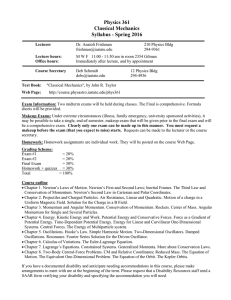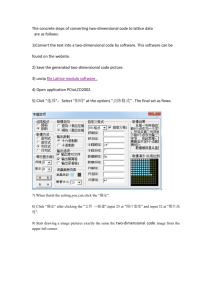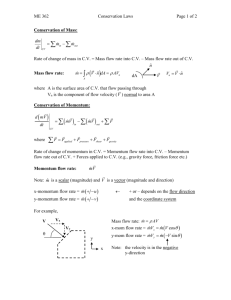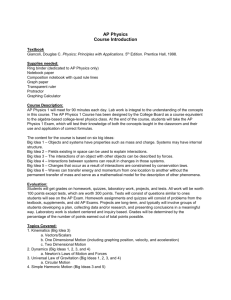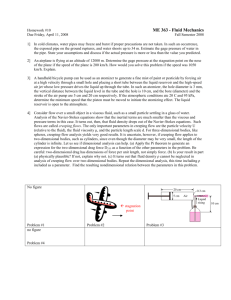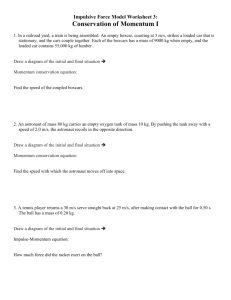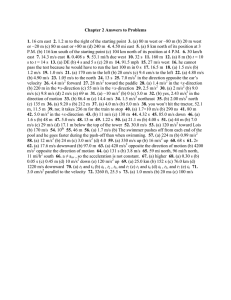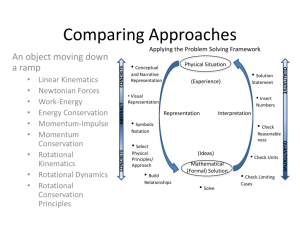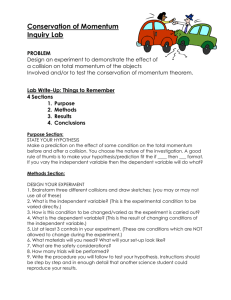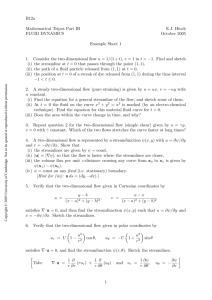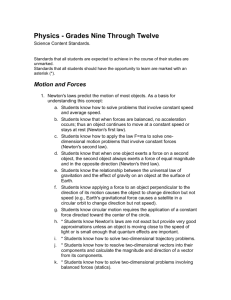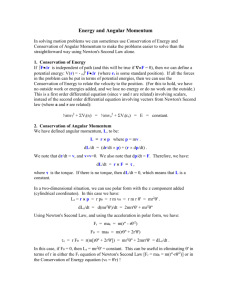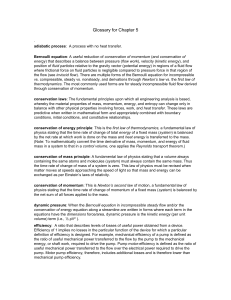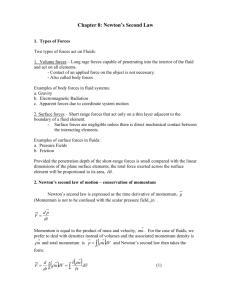Governing Equation for Generalised Two
advertisement
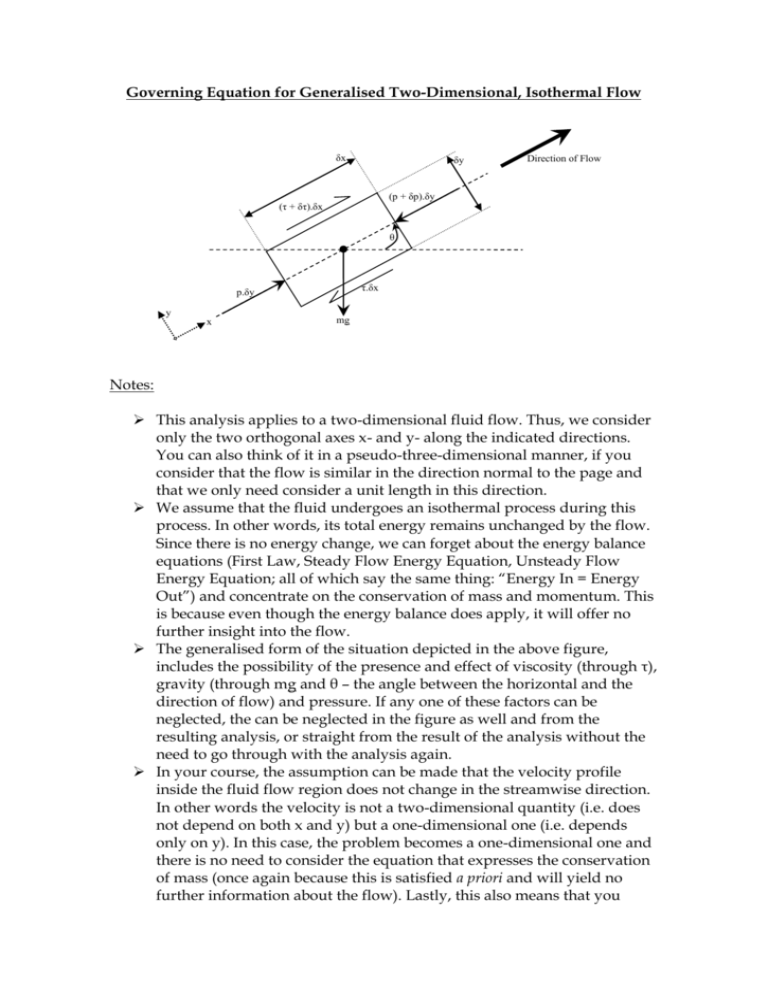
Governing Equation for Generalised Two-Dimensional, Isothermal Flow δx δy Direction of Flow (p + δp).δy (τ + δτ).δx θ τ.δx p.δy y x mg Notes: This analysis applies to a two-dimensional fluid flow. Thus, we consider only the two orthogonal axes x- and y- along the indicated directions. You can also think of it in a pseudo-three-dimensional manner, if you consider that the flow is similar in the direction normal to the page and that we only need consider a unit length in this direction. We assume that the fluid undergoes an isothermal process during this process. In other words, its total energy remains unchanged by the flow. Since there is no energy change, we can forget about the energy balance equations (First Law, Steady Flow Energy Equation, Unsteady Flow Energy Equation; all of which say the same thing: “Energy In = Energy Out”) and concentrate on the conservation of mass and momentum. This is because even though the energy balance does apply, it will offer no further insight into the flow. The generalised form of the situation depicted in the above figure, includes the possibility of the presence and effect of viscosity (through τ), gravity (through mg and θ – the angle between the horizontal and the direction of flow) and pressure. If any one of these factors can be neglected, the can be neglected in the figure as well and from the resulting analysis, or straight from the result of the analysis without the need to go through with the analysis again. In your course, the assumption can be made that the velocity profile inside the fluid flow region does not change in the streamwise direction. In other words the velocity is not a two-dimensional quantity (i.e. does not depend on both x and y) but a one-dimensional one (i.e. depends only on y). In this case, the problem becomes a one-dimensional one and there is no need to consider the equation that expresses the conservation of mass (once again because this is satisfied a priori and will yield no further information about the flow). Lastly, this also means that you need only consider the conservation of momentum in the direction of flow and in no other direction (e.g. in the above figure the x-direction). This means that in your course you will only deal with one-dimensional flow cases. The balance of momentum in the x-direction yields: o dτ/dy = dp/dx + ρgsinθ
